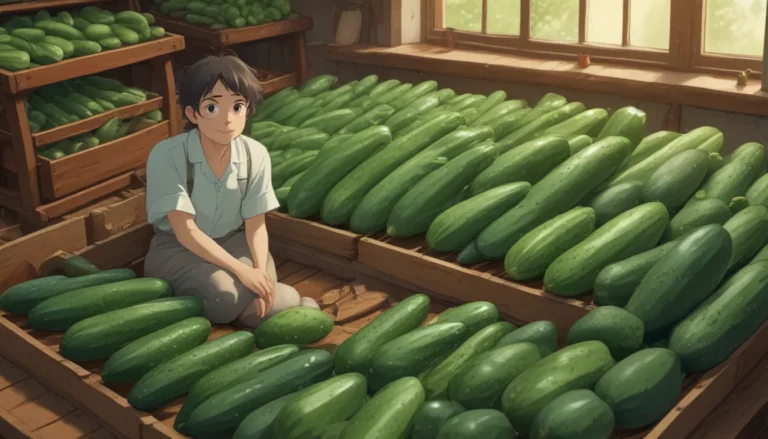A Comprehensive Guide to Identifying and Managing Septoria Leaf Spot on Tomatoes

Are you a tomato plant enthusiast facing the challenge of dealing with Septoria leaf spot? Well, you’re in the right place. In this informative guide, we will delve into the symptoms of this fungal disease, how to differentiate it from other leaf blights, and the best cultural control options available to prevent or minimize the infection.
So sit back, grab your gardening gloves, and let’s dive into the fascinating world of tomato plant diseases!
Understanding Septoria Leaf Spot
Picture this – small spots on the lower leaves of your beloved tomato plants. These are the first red flags indicating a possible Septoria leaf spot infection. These spots typically range from 1/16 to 1/8 of an inch in diameter, with dark brown margins and gray or tan centers. As the infection progresses, these spots merge into larger lesions with dark brown structures – the fruiting bodies of the fungi responsible for producing spores. Additionally, infected leaves tend to turn yellow before withering and dropping off, ultimately impacting the plant’s fruit development.
How to Differentiate Septoria Leaf Blight from Early Blight
Early blight and Septoria leaf spot may both display spots on tomato leaves, but there are key differences. In early blight, lesions lack visible pycnidia and the classic bullseye pattern found in Septoria infections. Learning to identify these differences is crucial in determining the most appropriate course of action to combat the specific disease affecting your plants.
Understanding the Spread of the Disease
Fungi causing Septoria leaf spot thrive in temperatures between 59 to 80°F and produce spores that spread through various means, from splashing water to the inadvertent transfer by tools, insects, or clothing. Under favorable conditions, a tomato plant can be fully infected within a mere two weeks. The ease and speed of spread make it imperative to adopt preventive measures to halt the disease in its tracks.
Cultural Control Options to Combat Septoria Leaf Spot
When it comes to battling Septoria leaf spot, prevention is key. Employing cultural controls can significantly reduce the risk of infection and limit its spread. Here are some effective strategies:
- Remove Diseased Leaves: Early removal of infected leaves can help prevent the disease from spreading further.
- Remove Susceptible Weeds: Keep a vigilant eye out for weeds that could harbor the disease and remove them promptly.
- Mulch Around the Base of Plants: Mulching your plants can help reduce the spread of spores via soil splashing.
- Do Not Water Overhead: Avoid watering your plants overhead, opting instead for early morning watering at the base.
- Promote Good Airflow: Enhance airflow around your plants through staking, pruning, and removing lower leaves.
- Remove Plants at the End of the Season: Proper disposal of plants at the season’s end can prevent overwintering of the pathogen.
- Rotate Crops: Implement crop rotation practices to reduce the risk of recurring infections.
- Disinfect Stakes and Cages: Ensure stakes and cages are thoroughly disinfected to prevent potential re-infection.
Fungicide Treatments for Severe Infections
In cases of severe infections, fungicides can be utilized to prevent further spread of the disease. While fungicides won’t cure existing infections, they can help contain the disease and protect unaffected parts of the plant. Popular fungicides such as Bonide Fung-onil Concentrate and organic options like Bonide Copper Fungicide Dust can be effective when used preventatively and at regular intervals.
Prompt Action Against Septoria Leaf Spot
Septoria leaf spot can be a relentless foe for tomato plants, potentially impacting fruit development and overall plant health. By promptly identifying the symptoms and implementing appropriate cultural controls, you can effectively manage the disease and safeguard your tomato crop. Remember, prevention is always better than cure when it comes to plant diseases!
Have you encountered Septoria leaf spot in your tomato plants? Share your experiences and tips in the comments below.
For more insights into common tomato plant diseases and effective management strategies, check out our related guides:
- How to Identify, Prevent, and Treat Common Diseases of Tomatoes
- How to Identify and Prevent Catfacing of Tomatoes
- How to Prevent, Identify, and Treat Blight on Tomatoes
Here’s to healthy and vibrant tomato plants in your garden!
Thank you for exploring this comprehensive guide on Septoria leaf spot management. Remember, a healthy tomato plant is a happy tomato plant!





